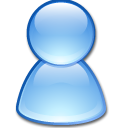Description
In "Aesthetic Computing", key scholars and practitioners from art, design, computer science, and mathematics lay the foundations for a discipline that applies the theory and practice of art to computing. "Aesthetic Computing" explores the way art and aesthetics can play a role in different areas of computer science. One of its goals is to modify computer science by the application of the wide range of definitions and categories normally associated with making art. For example, structures in computing might be represented using the style of Gaudi or the Bauhaus school.This goes beyond the usual definition of aesthetics in computing, which most often refers to the formal, abstract qualities of such structures - a beautiful proof, or an elegant diagram. The contributors to this book discuss the broader spectrum of aesthetics - from abstract qualities of symmetry and form to ideas of creative expression and pleasure - in the context of computer science. The assumption behind aesthetic computing is that the field of computing will be enriched if it embraces all of aesthetics.
Human-computer interaction will benefit - 'usability', for example, could refer to improving a user's emotional state - and new models of learning will emerge.

